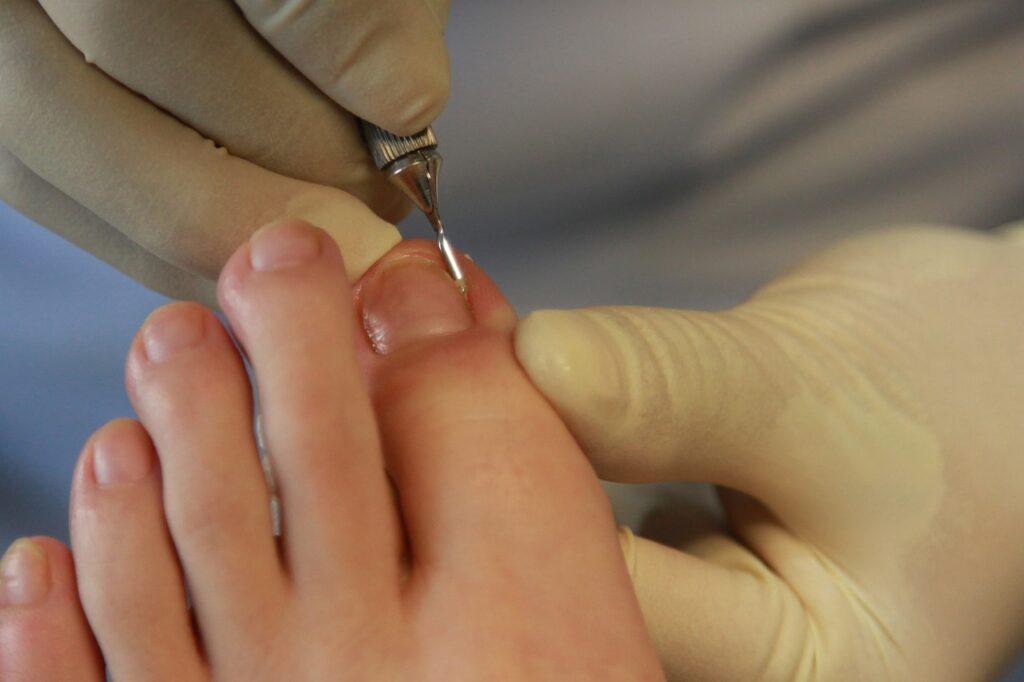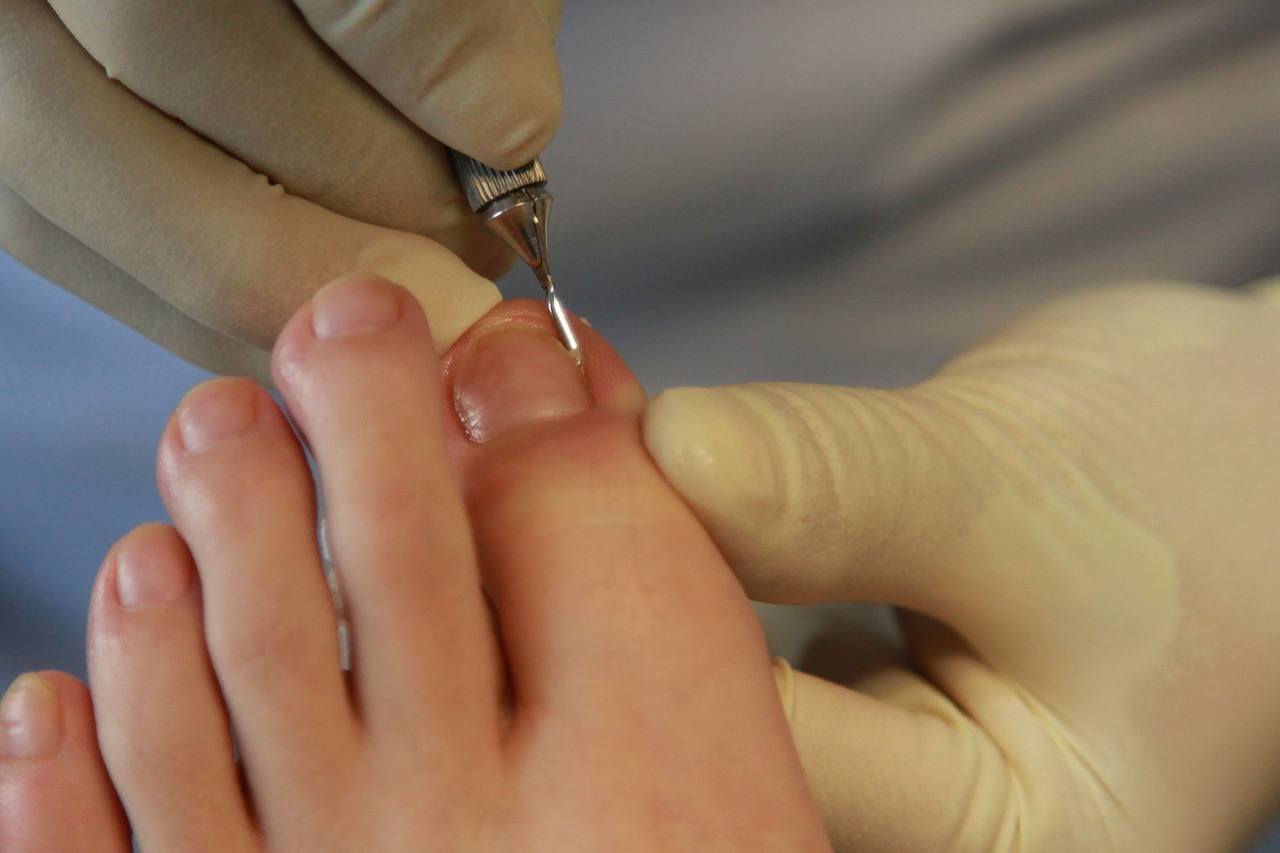What’s an Ingrown Toenail?
Ingrown toenails are a common foot condition where the toenail is curved and grows into the skin. This most commonly happens at the sides of the nail at the nail borders on the big toes. This digging in of the toenail can cause skin irritation, soreness and pain, redness, swelling, warmth of the toe, and even infection.
The medical term for an ingrown toenail is onychocryptosis. Infection can occur if the ingrown nail causes a break in the skin and bacteria get in. An infection caused by an ingrown toenail is often characterized by drainage and foul odor.
You can do different things at home to treat an ingrown toenail. But it’s important to skip the home remedies and see your podiatrist immediately if you suspect an infection or have diabetes, circulation problems, or numbness in the toes.
You may be setting the stage for ingrown toenails yourself. Read on to learn about this common but pesky foot condition.
What Causes an Ingrown Toenail?
There are many possible causes of an ingrown toenail. They can include:
- Improper nail trimming
- If you cut your toenail too short or rounded, the nail may grow into the skin.
- Many people trim their nails so the nail curves with the shape of their toes, but this encourages the toenail to grow into the skin of your toe.
- Poorly fitting shoes
- Shoes that are too tight, narrow, or short.
- High heels transfer most of your body weight toward the front of your foot and put a lot of pressure on your big toes.
- Toe trauma
- Ingrown toenails can be a result of trauma. Toenail trauma may include stubbing your toe, having a heavy object fall on your toe, or having the toe stepped on.
- Genetics
- You can thank your parents for this one if you’re one of many people in which the tendency for ingrown toenails is inherited.
- Nail conditions
- You may be more prone to ingrown toenails if you have a nail condition such as a fungal infection or psoriasis.
- Toenails tend to curve and thicken as we age.
- Repetitive pressure from certain sports
Improper nail trimming and poorly fitting shoes are the most common causes of ingrown toenails. But be aware that ingrowns have many causes and can be a condition that develops over time.

What Are the Symptoms of Ingrown Toenails?
Any of your toenails can become ingrown, but this nail condition most commonly affects the big toe. When you first have an ingrown toenail, it may feel hard and swollen.
Some symptoms of an infected ingrown toenail can include:
- Swelling
- Pain
- Liquid or pus coming out of your toe
- Redness or darkening of the area
- Toe feeling warm or hot
- Odor
Home Treatment for Ingrowns
If you suspect you have an ingrown, it is not infected, and you don’t have a complicating medical condition like diabetes or other circulatory disorders, you can soak your foot in lukewarm water with Epsom salts two or three times a day for 15 minutes. Massage the skin at the side of the toenail, gently pushing it away from the nail. Make sure you dry your foot thoroughly after each soak.
There are a few important things to remember if you are going to treat your mild ingrown toenail at home:
- Do not cut a notch in the nail.
- Refrain from trimming nail borders.
- Over-the-counter medications will not be effective in treating ingrowns. Topical medications may help mask the pain, but they do not fix the problem.
Do not attempt to remove any part of an infected nail. You should see your podiatrist, who can diagnose and properly treat nail problems.

When Should I See a Podiatrist for My Ingrowns?
If the toenail isn’t better after three to five days of conservative, at-home care, or it becomes infected, you should schedule an appointment with your podiatrist. You may need to take an oral antibiotic for the infection, and your podiatrist may need to remove the ingrown part of the nail.
If you notice drainage, pain, or excessive redness around the toenail, you should schedule an appointment with your podiatrist right away.
Remember, if you have diabetes or poor circulation, you should see your podiatrist immediately at the first signs of an ingrown toenail, as it can lead to more serious foot and health complications due to poor circulation and damaged nerves in the feet.
Your podiatrist will remove the ingrown portion of the nail. This is called an avulsion. They may also prescribe medication to treat the infection.
In more severe cases, your podiatrist may have to perform a total avulsion and remove all of your toenail. It can take a few months for your nail to regrow.
If you experience ingrowns that keep occurring, your podiatrist may suggest a matrixectomy. During a matrixectomy, your podiatrist not only removes a portion (or all) of the ingrown toenail, but they also treat the base of the nail (called the nail matrix) with a chemical that prevents the nail from growing back again.
How to Prevent Ingrown Toenails?
Here are a few things you can do to prevent getting ingrown toenails:
- Don’t rip or tear your nails.
- Don’t round the corners of your toenails to match the shape of your toe when you’re trimming them. Trim your nails straight across.
- Wear shoes that fit correctly.
- Don’t trim your toenails too short.
- Don’t trim the nails any shorter than the edge of the toe.
- Check your feet!
- If you have diabetes, you should check your feet regularly for signs of ingrown toenails and other foot problems.
- Wear protective footwear.
- If your job or other activities put you at risk of injuring your toes, you should wear protective footwear.
- See a podiatrist to regularly have your nails trimmed if you can’t trim them yourself or if you have a condition that causes poor circulation in your feet.
Having an ingrown toenail can be a mild inconvenience or a very painful experience. Our podiatrists at Western Montana Foot and Ankle have more specialized training and experience treating ingrown toenails than any other medical professional.
If you’re suffering from an ingrown toenail, don’t hesitate to get help. Reach out to our office and get scheduled to see one of our podiatrists.
